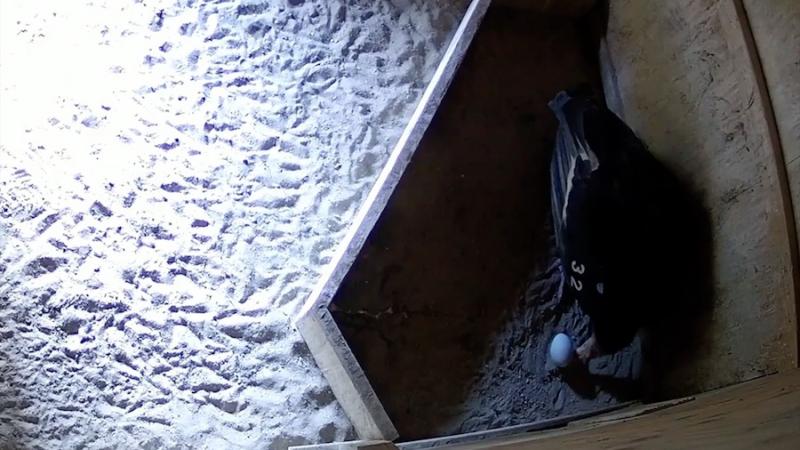Rare ‘double clutch’ brings zoo's condor count to 13

Recovery efforts continue at an eggs-cellent rate at Oregon Zoo conservation center
The Oregon Zoo’s Jonsson Center for Wildlife Conservation welcomed several more California condor eggs last month, bringing the current total to a lucky number 13. The most recent egg was the second laid by condor No. 174 this year, a rare occurrence known as a double clutch.
“It’s very exciting,” said Kelli Walker, who oversees the zoo’s condor recovery efforts. “Condors typically lay only one egg a year, and with only about 500 of these endangered birds in the world, every egg counts.”
In certain cases, Walker noted, keepers remove an egg from the nest box early in the season, thus encouraging a particular condor to lay a second time. That process has helped increase condor numbers and improve genetic diversity in the population since the recovery program began. But this egg was a surprise.
“Condor 174 double-clutched herself,” Walker said. “It’s pretty unheard of.”
Since mid-January, condors at the Jonsson Center have been laying the groundwork for species recovery one egg at a time. Of the 13 eggs laid this year, nine are confirmed to be fertile, and at least one more is expected soon.
Visible security cameras from Teledyne FLIR are providing improved views into the nesting areas and 24/7 observation of the condors, helping zoo staff better monitor the health of chicks and parents.
The California condor was one of the original animals included on the 1973 Endangered Species Act and is classified as critically endangered. In 1982, only 22 individuals remained in the wild and by 1987, the last condors were brought into human care in an attempt to save the species from extinction. Thanks to recovery programs like the Oregon Zoo’s, the world’s California condor population now totals around 500 birds, most of which are flying free.
The Oregon Zoo’s condor recovery efforts take place at the Jonsson Center for Wildlife Conservation, located in rural Clackamas County on Metro-owned open land. The remoteness of the facility minimizes the exposure of young condors to people, increasing the chances for captive-hatched birds to survive and breed in the wild.
Upgrades and new equipment at the center have been made possible through continued support from the Avangrid Foundation and donations to the Oregon Zoo Foundation, which supports the zoo’s efforts in advancing animal welfare, conservation and education. To learn more or to make a gift, call 503-220-2493 or email [email protected].
More than 70 chicks have hatched at the Jonsson Center since 2003, and more than 50 Oregon Zoo-reared birds have gone out to field pens for release. Several eggs laid by Oregon Zoo condors have been placed in wild nests to hatch.
California condor breeding programs are also operated at San Diego Zoo’s Wild Animal Park, the Los Angeles Zoo and the Peregrine Fund’s World Center for Birds of Prey in Idaho. For more information, visit oregonzoo.org/condors.
More News

Rescued cougar cubs are venturing out
A pair of orphaned cougar cubs, rescued and brought to the zoo by Washington Department of Fish and Wildlife staff in November, have begun exploring their outdoor habitat.April 17, 2025

Zoo seeks pika watchers for summer season
The Oregon Zoo is recruiting volunteers for Cascades Pika Watch.April 15, 2025

Zoo convenes action for imperiled elephants
Sabah government representatives joined conservation NGOs, local communities, palm oil producers, and tourism operators this week in the fight to save the world’s smallest elephants from extinction.April 11, 2025

